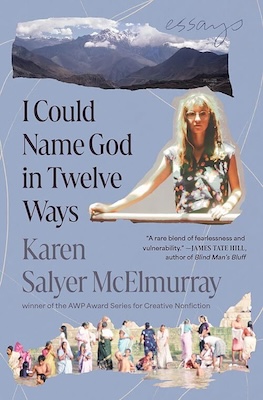“I am a white Englishman, an IC1, and this was never supposed to be my fate.”
As with Another Kind of Concrete, Koushik Banerjea’s 2020 full-length debut, Category Unknown bounces between decades and shows us the families, neighbors, and music that shape the kids. It’s about the clashing of cultures and the adoption of new ones, though without the innocence of Concrete, which was largely from the perspective of a child just discovering the ugliness that D and his classmates are fully immersed in here.
We’re introduced to Denis in 1978, and peek into his life at a number of key points between 1982 and 2008. Early on, he’s rechristened as D. By 2008, he’s been whittled down to madness after losing his career, his marriage long over after producing “bundles wrapped in failure” rather than “little bundles of fat and tissue and miracle.” We wonder alongside D: How did we get here?
It can be hard to tell whether Banerjea is looking at his characters with empathy or disdain — he manages to apply both, and skillfully. As we jump to 2008, we’re let in on what’s become of D, a middle-aged white man eager to fight for his dignity, only he’s fallen off the world and hasn’t figured out how to get back on. “Every so often the rules change,” he says. It would be easy to paint him as the villain of this story, but as we’re introduced to those around him, we learn that category unknown refers to the sizing up of someone whose identity we can’t quite decipher, and we’re all sizing each other up, making life hell for somebody else whether we know it or not.
Category Unknown is a dense and ambitious book; it continues a conversation relaunched by the racial reckoning of 2020, and reminds us that the conversation isn’t the least bit new. We’re let in on multiple stories bound together by D, raised in South London and baffled by the well-meaning white saviors who seemingly follow him to Warwick.
We follow the transformation of D’s former classmate, Conrad, London-born to a Jamaican family. Conrad quits swiping lunch money when he adopts a new sense of pride, hair and accent included, eating up the attention that follows. His transformation into a Rasta, though, is aided by anger stemming from the encyclopedias his nan keeps at home, which he discovers were written under a British gaze and replace stories of culture with stories of poverty.
There are drivers here of recurring themes, placing front and center the characters caught between identities: Conrad hides his new accent from his nan, while she maintains those shelves of books to gloss over an immigration story and play up a family “from learning.” We get a brief hint of who she was as a frustrated young immigrant, “a time before mangoes” hit the local markets in England.
There’s Rukhini, eager to remind that she’s been rebranded as Roxy, also pleased that she can resist boys in pink polos pretending to be big men. And then, of course, there’s D, wondering how to maturely drink a can of beer at a relaxed college gathering while his more sophisticated peers hold their wine.
Concrete saw Banerjea respectfully building out the worlds of his supporting female characters, and he does the same here. But Category Unknown also has him more frankly defining toxic masculinity. Why wouldn’t he? This largely a book about young men coming of age. But it’s also apparent in Laura’s story: she stops associating with a boy who seeks approval from other boys, knowing they trap one another in bravado, “the language of their own oppression.” She instead gets involved with the boy’s father — El Profesor — who envisions himself as El Caudillo, chief of his own magnificent cock, until he’s brought back to reality by the expression on Laura’s face. Banerjea has given Laura agency that leads to some of the strangest and most rewarding plot twists here.
As we jump to Laura’s college years, and her relationship with D, we see D get protective over her when a classmate mocks or perhaps flirts with her name’s Spanish pronunciation in his own English accent — a classmate who is “in all probability kitted out in Diadora Borg Elites and one of those horrible knock-off Tacchini tracksuit tops.” In fact, D is threatened or appalled by the fashions of nearly every man who approaches her; we realize this relationship will be short-lived when Laura brings him to Spain, where the men dress a bit gay, what with their exposed ankles and the sleeves of cashmere jumpers wrapped warmly around their shoulders.
Location is a relevant character here, and even those on the periphery undergo style transformations, setting a tone for each phase of the book. The skins slowly shift from MA1 to Harrington jackets, the kids adopt a “cartoon Cockney” accent as two-tone makes its way out, and a shift to Farah trousers and Freeez signals the beginning of the end.
You can sense Banerjea’s loyalty to his younger self, enthusiastically brought out every time a character is subjected to the snobbery around music and clothing, and a loyalty as well, perhaps, to a Southeast London where everyone largely talked nonsense. But there’s also great criticism of the expectations that capitalism places on us, from a confused adoption of conservative politics to aspirations of middle management, and a glimpse of why some pursue justice in the form of violence. With time comes hindsight, and Banerjea uses it here to reflect on cultural turning points, social patterns, and the imposter syndrome to which no one is immune.
Read also Koushik Banerjea’s essay “It’s a London thing.”






